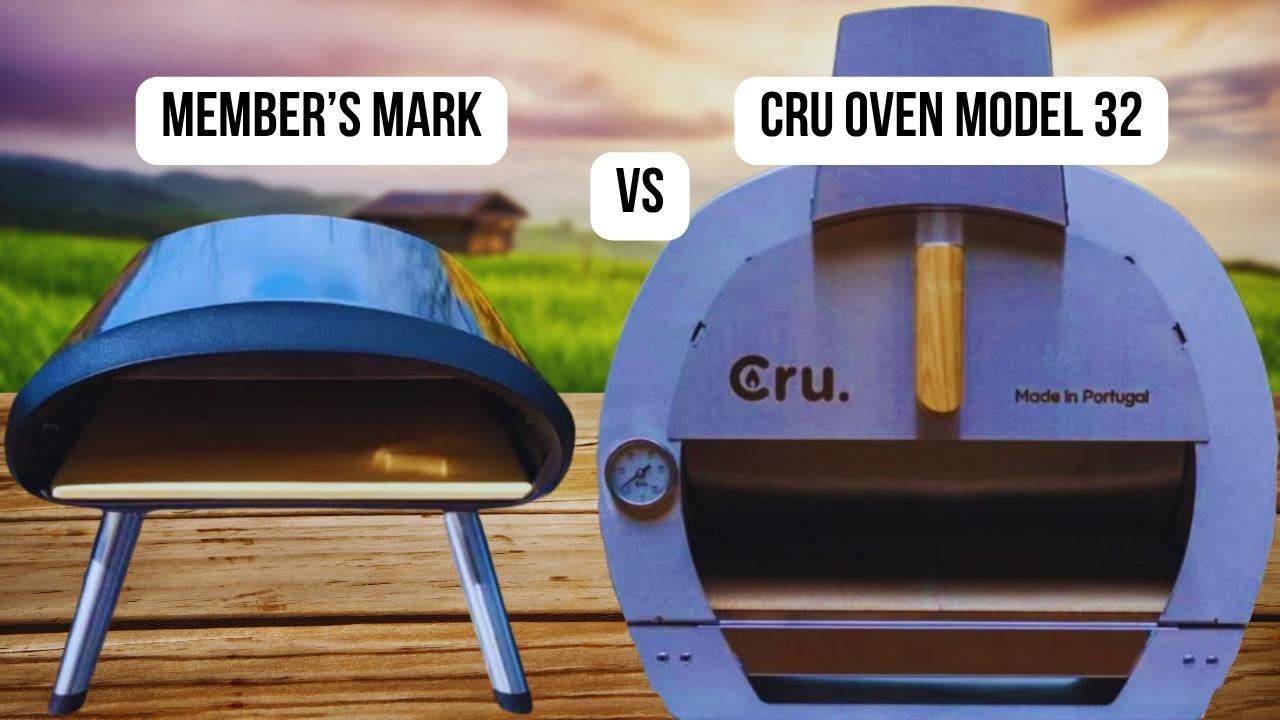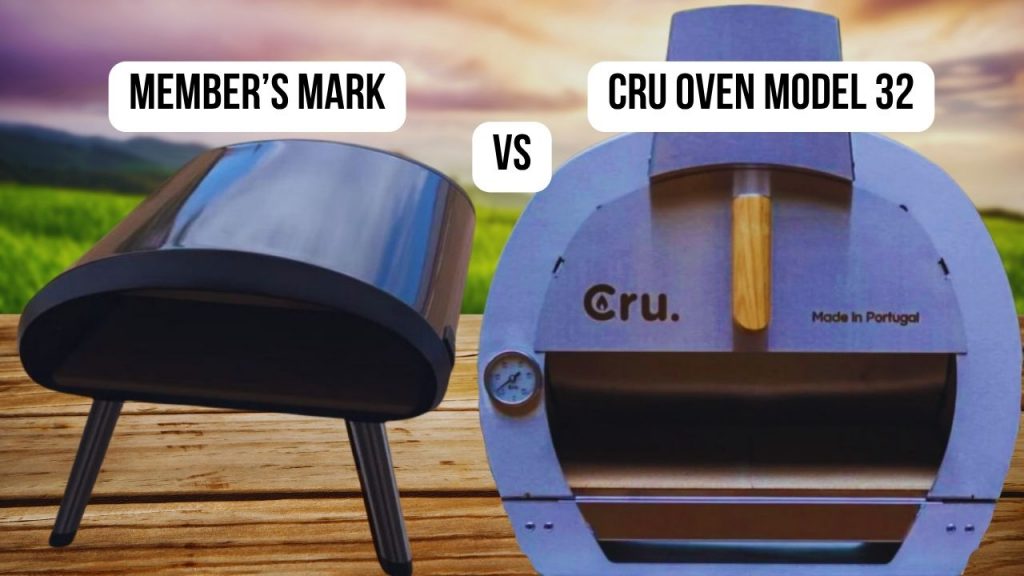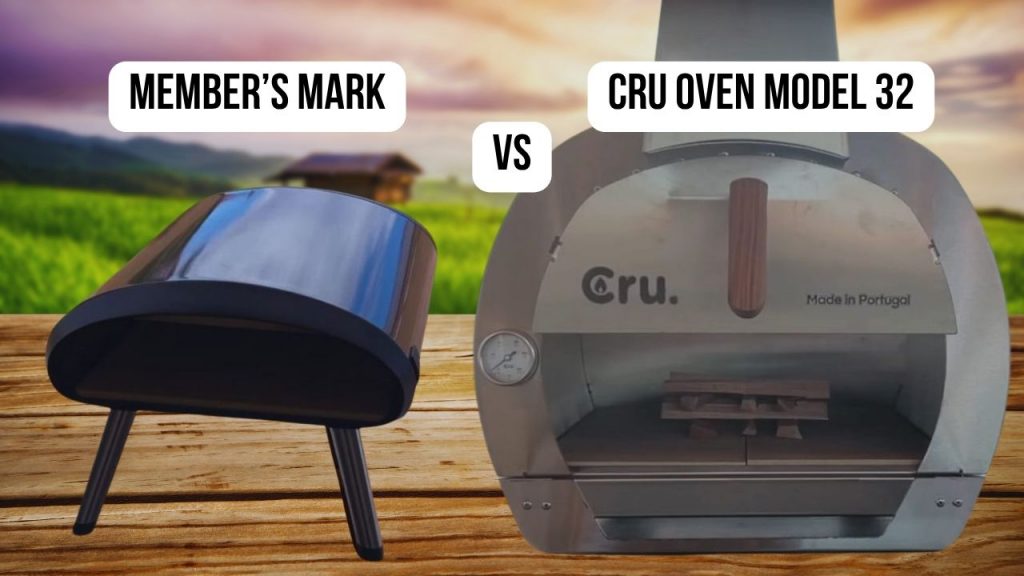I’m a restaurant chef with over 10 years of experience working at my restaurant, Dequte Restaurant LironBoylston. In this article, I’ll compare the Member’s Mark pizza oven and the Cru Oven Model 32 because I’ve personally used both in my kitchen and tested them side by side. I compared their quality and materials, temperature control, shape, first-time usage impressions, power source, size, ease of cleaning, and I also conducted a real pizza cooking test to see how long it takes to make a great pizza. If you’d like to see the thorough process behind how I test pizza ovens, you can check out my separate article where I detail my methodology.
The Member’s Mark oven is an affordable, lightweight outdoor gas pizza oven designed for simplicity and portability.
The Cru Oven Model 32, on the other hand, is a premium wood-fired oven built in Portugal, known for its high-quality craftsmanship and large cooking chamber.
This article offers a comprehensive comparison of the Member’s Mark pizza oven and the Cru Oven Model 32, based on my own testing experience.
As a note, I will include referral links in this article. If you decide to purchase through them, I’ll earn a small commission at no cost to you, which helps me keep my blog alive and continue sharing honest reviews. Thank you for your support!
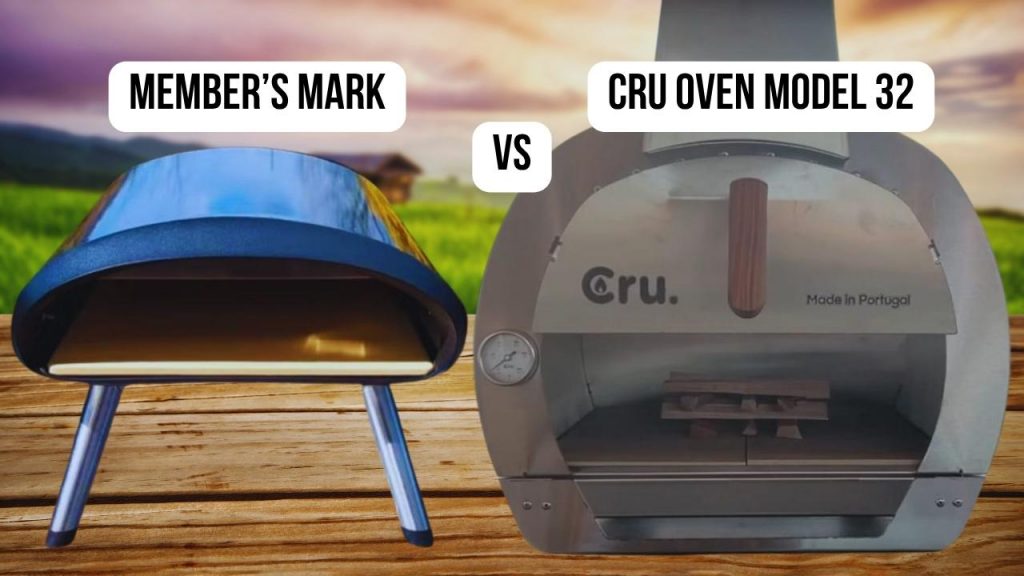
Member’s Mark VS Cru Oven Model 32: Quality and Materials
| The Member’s Mark Pizza Oven uses aluminum and stainless steel with a cordierite stone. While the steel is thinner than premium ovens, it still feels solid enough for most backyard cooks, and all the included accessories are surprisingly decent quality for the price point. |
The Cru Oven Model 32 impresses with heavy-duty 304 stainless steel, ceramic fiber insulation, and thick cordierite stones. It definitely feels more premium and robust, and the dual-layer design helps with durability over years of use.
|
Member’s Mark VS Cru Oven Model 32: Temperature Control
| The Member’s Mark can theoretically heat to 900°F but in practice often peaks around 750°F after long preheating. Temperature control can be inconsistent, but for the price it offers adequate heat for Neapolitan-style pizzas if you learn how to manage the flame. |
The Cru Oven Model 32 reaches up to 900°F, though it usually takes closer to 40–45 minutes. Once hot, it retains temperature well, though you’ll still need to monitor the gauge and rotate your pizza carefully to avoid burning or undercooking.
|
Member’s Mark VS Cru Oven Model 32: Shape
| Member’s Mark has a round dome design with a rotating stone that helps cook evenly across the base. The rotating feature is a standout, reducing the need to manually turn pizzas mid-bake. |
The Cru Oven Model 32 has a barrel-shaped, tall chamber with a large opening. The shape allows for versatile cooking of pizzas, bread, and meats, but can also let out heat faster if you don’t use the door properly.
|
Member’s Mark VS Cru Oven Model 32: First-Time Usage Impressions
| My first impression of the Member’s Mark was that it’s simple and approachable—assembly was fast, ignition worked right away, and it felt user-friendly for beginners. The thin stone was my only reservation, but it baked decently right out of the box. |
The Cru Oven Model 32 felt more serious and professional. Unboxing revealed quality parts, and assembly was minimal. The learning curve was a little steeper, particularly in maintaining an even fire and tracking stone temperatures.
|
Member’s Mark VS Cru Oven Model 32: Power Source
| Member’s Mark runs on propane, which makes it fast to start and less work to keep running—just hook up the tank and turn it on. That simplicity is ideal if you want low-maintenance outdoor cooking. |
The Cru Oven Model 32 is wood- or charcoal-fired. This gives a classic wood-fired flavor but requires more effort: lighting, tending the fire, and managing consistent heat over longer cooking sessions.
|
Member’s Mark VS Cru Oven Model 32: Size
| Member’s Mark is compact and lightweight (28.7 lbs), making it easy to store and move around. The cooking chamber is smaller, but still plenty for 12” pizzas. |
The Cru Oven Model 32 is significantly larger and heavier (56 lbs). It has a more spacious cooking surface for bigger dishes or multiple items, but it’s less portable.
|
Member’s Mark VS Cru Oven Model 32: Ease of Cleaning
| Cleaning the Member’s Mark is simple. Let it cool, wipe the exterior, and clean the stone and tray with soapy water. The straightforward design means fewer nooks and crannies to catch debris. |
The Cru Oven Model 32 is easier to clean than most wood-fired ovens, thanks to the removable dome. You lift off the top, sweep out ashes, and wipe down the interior thoroughly.
|
Pizza Cooking Test
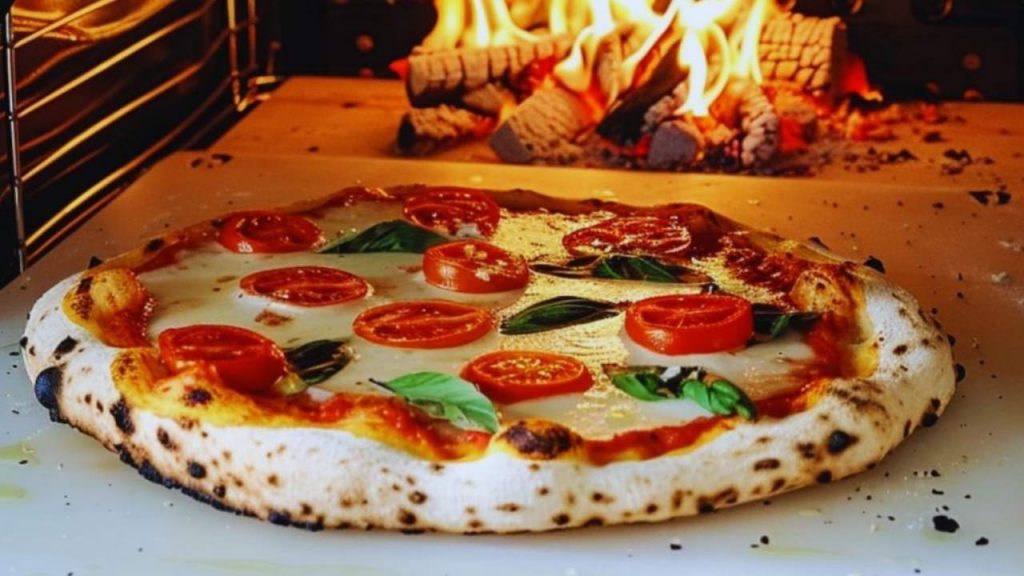
The Member’s Mark Pizza Oven took about 30–35 minutes to get as hot as it was willing to go, which in my tests was around 750°F rather than the advertised 900°F. Once the stone was preheated, my Margherita pizza cooked in approximately 6–7 minutes. The rotating stone base helped cook the crust more evenly than I expected, though I did need to check it periodically to prevent one side from charring. The taste was decent: the crust had a nice crisp edge, the center was cooked through, and there was a gentle char that gave it a backyard wood-fired feel—though not quite as smoky as a real wood oven.
The Cru Oven Model 32 needed about 40 minutes to preheat to a steady 850–875°F, which is close to what Cru advertises. Once I reached target temperature, my Margherita pizza baked in 90 seconds to 2 minutes. The crust rose beautifully, with a golden color and distinctive leopard spotting. The flavor was exceptional—smoky, rich, and very close to authentic Neapolitan pizza. The only drawback was needing to keep an eye on the fire and rotate the pizza constantly to avoid burning the edges.
How We Tested
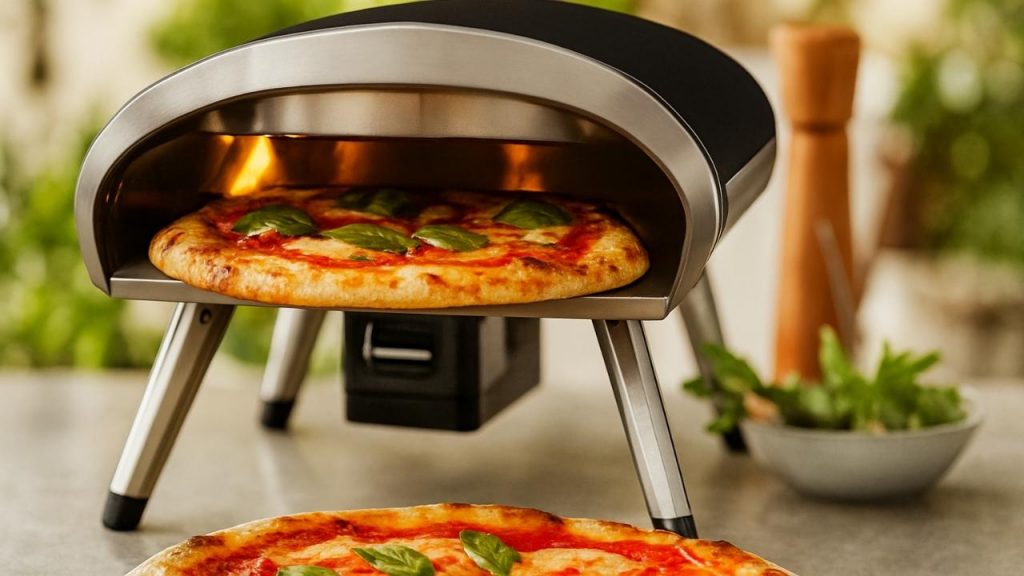
To compare the Member’s Mark Pizza Oven and the Cru Oven Model 32, I conducted side-by-side cooking sessions in my professional kitchen at Dequte Restaurant LironBoylston. I followed the same preparation steps for each oven to keep the results consistent.
I measured preheating time using a laser thermometer to confirm the stone temperature before baking. For the cooking test, I used the same homemade Margherita dough recipe with fresh mozzarella, San Marzano tomato sauce, and basil. Each pizza was shaped to roughly 12 inches to see how well the ovens could handle a classic pie.
During the bake, I tracked how evenly the crust browned, how quickly the cheese melted, and how easy it was to rotate and manage the pizza. After cooking, I tasted each pizza side by side to compare texture and flavor. I also noted how quickly the ovens reheated between batches and how convenient the cleanup process felt once everything had cooled.
This process gave me a clear picture of how these ovens perform in real use, not just in specs.
Conclusion
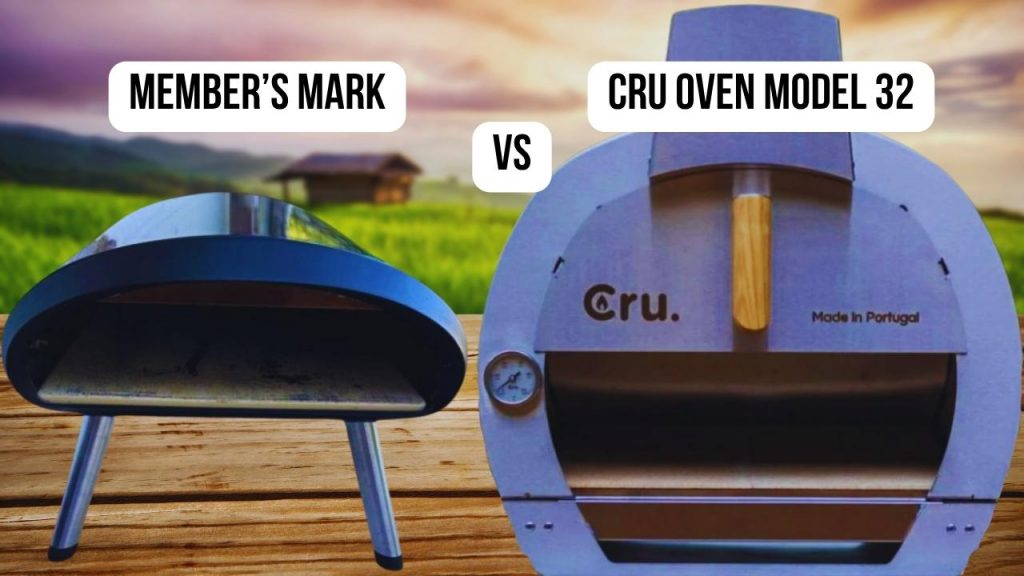
Ultimately, it’s your choice whether you prefer the Member’s Mark Pizza Oven or the Cru Oven Model 32. Both ovens have unique strengths and can elevate your outdoor cooking, depending on what matters most to you.
If you decide to buy one, I’d highly appreciate it if you use my referral links for purchasing. I’ll earn a small commission at no cost to you, which helps keep this blog alive and allows me to keep sharing detailed reviews like this.
Look through the best pizza ovens we found.

